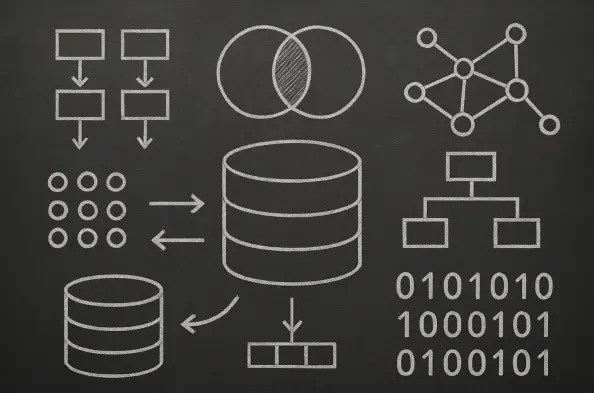For countless Mac users, the frustration of losing critical data—whether through accidental deletion, a system crash, or hardware failure—can be overwhelming, especially when a popular recovery tool like Recuva remains exclusive to Windows and unavailable for macOS. This gap in accessibility leaves Apple enthusiasts searching for reliable alternatives that can effectively retrieve lost files while seamlessly integrating with macOS file systems such as HFS, HFS+, and APFS. Fortunately, the market offers a variety of data recovery solutions tailored to Mac environments, many of which not only match but often exceed the capabilities of Recuva with advanced features and user-focused designs. This article explores the top software options designed to help Mac users recover their precious data, delving into their functionality, compatibility, pricing, and overall performance. Whether the need is for a beginner-friendly interface or professional-grade tools for complex recovery scenarios, the alternatives presented here aim to address a wide spectrum of requirements. By shedding light on these powerful tools, the goal is to equip Mac users with the knowledge to choose the right software without the burden of extensive trial and error, ensuring that lost files can be restored with confidence and efficiency.
Bridging the Gap for Mac Data Recovery
The absence of Recuva on macOS creates a significant challenge for Apple users who rely on data recovery software to salvage important files after unexpected losses. Unlike Windows, which benefits from Recuva’s straightforward approach and free version, Mac systems demand tools specifically engineered to navigate their unique file structures. Compatibility with macOS file systems is non-negotiable, as improper handling can lead to failed recoveries or further data corruption. Beyond compatibility, the urgency of acting swiftly cannot be overstated—halting usage of the affected drive immediately after data loss is a universal best practice to prevent overwriting deleted files. The alternatives discussed in this exploration have been selected for their ability to address these core needs, often incorporating enhanced scanning methods and support for a broader range of storage devices. Many Mac users may not realize that some of these tools also offer additional perks, such as data protection features or mobile device recovery, which can be invaluable in preventing future losses or tackling diverse data scenarios.
Moreover, the landscape of data recovery software for Mac reflects a growing trend toward versatility and specialization. While Recuva is known for its simplicity among Windows users, Mac alternatives frequently push boundaries with sophisticated algorithms that improve recovery success rates. For those unfamiliar with the intricacies of data retrieval, the right software can make the difference between a stressful ordeal and a seamless resolution. Factors like intuitive design and clear instructions play a pivotal role, especially for beginners who might feel daunted by technical processes. The following sections dive deeper into specific tools that stand out in this competitive field, evaluating how they cater to varying skill levels and recovery needs. By understanding the strengths and limitations of each option, Mac users can make informed decisions tailored to their unique circumstances, ensuring that critical data isn’t lost to technical incompatibilities or delayed action.
Leading Contenders for Comprehensive Recovery
Among the myriad of data recovery options for Mac, Disk Drill emerges as a standout alternative, frequently praised for its balance of user-friendliness and powerful capabilities. Priced at $89.00, this software supports an impressive array of over 400 file formats, ensuring versatility across different data types, from documents to multimedia. Its scanning options, including Quick, Deep, and Signature scans, work simultaneously to maximize recovery chances on the first attempt, a feature that sets it apart from many competitors. Beyond basic recovery, Disk Drill offers unique tools like advanced video repair for camera footage and disk health monitoring to prevent future data issues. While the free trial limits users to previews without actual recovery, the paid version unlocks full potential, including multi-language support and mobile device scanning. This makes it an ideal choice for a broad audience, from casual users to those handling more complex data loss scenarios, seeking a reliable and feature-rich solution.
Another strong contender, R-Studio, priced at $79.99, caters to a more advanced user base with its professional-grade features. It excels in areas like RAID reconstruction, forensic recovery for legal purposes, and the ability to add custom file signatures for unsupported formats. Supporting all major file systems across platforms, R-Studio ensures flexibility for users dealing with diverse storage setups. However, its cluttered interface and multi-step recovery process can be intimidating for novices, and the free trial restricts recovery to very small files, nudging users toward the paid version. Despite these hurdles, it remains a top pick for professionals or tech-savvy individuals who require deep customization and robust recovery options. For those comfortable navigating its complexity, R-Studio offers unparalleled control over the recovery process, addressing needs that simpler tools might overlook in intricate data loss situations.
Budget-Friendly and Specialized Solutions
For Mac users seeking a cost-effective alternative, PhotoRec presents a compelling option as a free, open-source tool that rivals paid software in certain recovery scenarios. Specializing in signature scans, it effectively retrieves documents, application files, and RAW photos or videos across multiple file systems like HFS, HFS+, and even unencrypted APFS. Its major drawback lies in the lack of a graphical user interface, relying instead on a terminal-like command-line setup that can deter less tech-savvy individuals. Additionally, the inability to preview recoverable files means users must recover data blindly, adding an element of uncertainty. Nevertheless, for budget-conscious users willing to tackle its steep learning curve, PhotoRec delivers reliable performance without any financial commitment. Its appeal lies in providing a no-cost solution that doesn’t compromise on core recovery capabilities, making it a viable choice for those prioritizing affordability over ease of use.
On the other end of the spectrum, DiskWarrior offers a niche solution at $119.95, focusing exclusively on repairing directory errors that cause data inaccessibility rather than general file recovery. It shines in scenarios involving logical file system damage on HFS and HFS+ drives, with bootable recovery options that can restore drives even when macOS fails to boot. However, its narrow focus means it lacks the diverse scanning capabilities of broader recovery tools, and the absence of a free trial may discourage users unsure of its relevance to their needs. The high cost relative to its limited scope, coupled with no support for newer APFS file systems, restricts its applicability. DiskWarrior is best suited for specific cases where directory repair is the primary concern, offering a targeted approach that can be invaluable in certain critical situations but less practical for general data recovery needs.
Accessible Tools for Novice Users
EaseUS Data Recovery, priced at $89.95, stands out as an approachable option for beginners, thanks to its user-friendly interface and a generous free trial that allows recovery of up to 2 GB of data alongside unlimited file previews. Compatible with mainstream file systems, it performs well in recovering documents and RAW photos, while its sorting and filtering tools simplify the process of locating recovered files. However, its performance can be inconsistent across less common video formats, and some users might be wary of privacy concerns due to automatic data collection practices. Additionally, updates to the software are less frequent compared to other contenders, which could impact long-term reliability. Despite these shortcomings, EaseUS remains a solid entry point for novices dealing with recent deletions or straightforward recovery tasks, providing an accessible experience that doesn’t overwhelm with technical complexity.
Beyond ease of use, selecting the right tool often involves balancing cost against functionality, a consideration that EaseUS addresses with its trial offer. For many first-time users, the fear of data loss is compounded by uncertainty about navigating recovery software. Tools like EaseUS mitigate this by prioritizing intuitive design, ensuring that even those with minimal technical expertise can attempt recovery without frustration. However, users should remain mindful of the software’s limitations, particularly with complex file types or outdated features, which might necessitate exploring other alternatives if initial attempts fall short. The focus on accessibility also extends to clear documentation and support resources, which can guide users through the recovery process step by step. For Mac users new to data recovery, starting with a tool that emphasizes simplicity can build confidence before tackling more advanced solutions if needed.
Essential Considerations for Choosing Recovery Software
When evaluating data recovery tools as alternatives to Recuva, several key factors should guide the decision-making process to ensure the chosen software aligns with specific needs. Compatibility with macOS file systems like HFS, HFS+, and APFS is paramount, as mismatched software can fail to recognize or retrieve data effectively. Equally important is the depth of scanning options—tools offering multiple scan types, such as Quick and Deep scans, often yield better results by adapting to different data loss scenarios. Support for a wide range of file formats is another critical aspect, especially for users dealing with diverse data types, from standard documents to specialized multimedia files. Additional features, such as data protection mechanisms or the ability to scan mobile devices, can enhance the overall utility of the software, providing value beyond basic recovery.
Another vital consideration is the balance between cost and performance, as free tools may suffice for basic needs while paid versions typically offer higher success rates and better support. User-friendliness cannot be overlooked, particularly for those unfamiliar with data recovery processes—intuitive interfaces and clear instructions can significantly reduce stress during critical moments. For advanced users, customization options and specialized features like RAID recovery might take precedence over simplicity. It’s also advisable to adhere to best practices, such as avoiding installation of recovery software on the affected drive and saving recovered files to a separate location, to maximize success. By carefully weighing these elements—technical compatibility, usability, pricing, and extra functionalities—Mac users can select a tool that not only addresses immediate recovery needs but also aligns with long-term data management strategies.
Reflecting on Data Recovery Solutions
Looking back, the exploration of data recovery options for Mac users revealed a diverse array of tools that fill the void left by Recuva’s unavailability on macOS. Disk Drill distinguished itself with comprehensive features and ease of use, while R-Studio catered to professionals with intricate recovery demands. PhotoRec provided a cost-free lifeline for the budget-conscious, despite its challenging interface, and DiskWarrior addressed niche directory repair needs at a premium. EaseUS Data Recovery offered a welcoming entry for beginners, balancing accessibility with a solid free trial, even if it stumbled on consistency.
Moving forward, Mac users should prioritize immediate action post-data loss by ceasing drive usage and selecting a tool that matches their technical comfort and specific recovery scenario. Testing free trials or versions where available can offer insight into a software’s effectiveness before committing to a purchase. Additionally, integrating data protection habits, such as regular backups and monitoring disk health with tools like those in Disk Drill, can prevent future losses. By staying informed about evolving software updates and adhering to universal recovery best practices, users can navigate data challenges with greater assurance, ensuring that critical files remain within reach even after unexpected setbacks.






